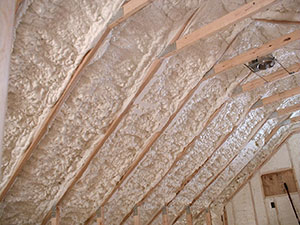



Learn about the difference between chemical hazards and exposure and how these can impact risk.
Understanding the chemical makeup of the products in our homes and offices is a critical step in improving the health impacts of the built environment, but it is not the only step. In order to make well-informed decisions, architects, designers, and contractors consider how often building occupants may be exposed to products or product ingredients in order to fully understand the impacts of one material over another.
Some building products may contain chemicals that you might have questions about. For example, a building product may contain a chemical ingredient identified by a news report, blog post or advocacy organization as harmful to human health. So does that mean the building product or material shouldn’t be used?
The mere presence of a chemical ingredient in a product does not necessarily mean that chemical is a risk, or will cause harm to people using the product. The level of risk is determined not only by the presence of the chemical itself, but also by if and how a person is exposed to the chemical, at what concentration and for how long, as well as the physical properties of the chemical itself.
The terms “risk” and “hazard” may seem to have very similar meaning to most of us, but to a scientist they are actually very different. With respect to chemistry, the terms have very specific meanings:
Hazard refers to the inherent properties of a substance that make it capable of causing harm to a person or the environment.
Exposure describes both the amount of, and the frequency with which a substance comes into contact with a person, group of people or the environment.
Risk is the possibility of a harm arising from a particular exposure to a substance, under specific conditions.
The actual chance of harm from exposure to a chemical ingredient depends on a variety of factors – including how much of the chemical ingredient is in a product; how the product is used; and what kind of exposure to the chemical typically occurs from using a product that contains the chemical. For example:

Spray polyurethane foam used in insulation is formed by reacting a polyol (an alcohol with more than two reactive hydroxyl groups per molecule) with a type of chemical called diisocyanates. Most polyurethane products are fully “cured” before they are sold, meaning these products are fully reacted and therefore considered to be inert and non-toxic, according to the U.S. Environmental Protection Agency.

Carpeting can emit volatile organic compounds (VOCs) during the installation process, but these emissions can largely dissipate within 24 to 48 hours, or even faster with fresh air ventilation. Builders should take care to follow appropriate guidelines during and post-installation to minimize exposure to these substances. When guidelines are followed correctly, VOC levels can be reduced to trace amounts post-installation.

The form that a chemical product takes when used also can determine potential risk or harm to human health. For instance, titanium dioxide, used in paints and coating to provide opacity and durability, can pose an inhalation hazard when in powder form. But in paint products the titanium dioxide is in liquid form, and thus poses little to no hazard.
